By Matthew Merighi
The military plays an integral role in dangerous humanitarian operations. What are these operations and how exactly does the humanitarian world work?
Join us for the latest episode of Sea Control for a conversation with CDR Andrea Cameron of the U.S. Naval War College about her work at the intersection of security policy and humanitarianism. She talks about the different kinds of humanitarian operations, how the military gets looped in, and provides guidance for how people in uniform can better operate in a complex environment.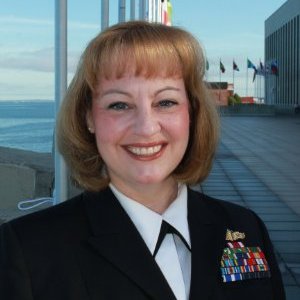
Download Sea Control 144 – Humanitarian Operations with CDR Andrea Cameron
A transcript of the interview between Andrea Cameron (AC) and Matthew Merighi (MM) is below. The transcript has been edited for clarity. Special thanks to Associate Producer Ryan Uljua for producing this episode and Associate Producer Cris Lee for the transcription. Note: these views do not necessarily represent those of the U.S. Naval War College, the U.S. Navy, or Department of Defense.
MM: So, as is Sea Control tradition, please introduce yourself and tell us a little bit about your background and how you got to where you are now.
AC: I have had a very unique career, I was a Surface Warfare Officer for seven years, I was stationed on big deck amphibs and aircraft carriers. And then I was a human resources officer in the Navy for about 10 years. I specialized in education, training, and development. And after that I was selected as a permanent military professor. When I joined the Navy back in the 90s, the post-Cold War era had a really different variety of military operations other than war, and I was fascinated at the time how military could respond to such a variety of contingencies in short order. So, my particular interest is humanitarian assistance/disaster relief. When I was selected as a permanent professor, they let me study whatever I wanted within the security studies field so I chose kind of a mix of international relations theory and political science, and applied that specifically to my topic of humanitarian assistance-disaster relief
MM: So, you mention the term permanent military professor a couple of times in your intro, what is that role, how did you get selected for it? What are the benefits and drawbacks, how did you get to be in that particular role?
AC: So, permanent military professor is a lateral transfer. If you’re selected, the Navy funds a PhD program for you and your obligated service is basically the rest of your career through statutory retirement, while you’re serving as a professor at one of the Navy’s educational institutions. It’s a very small community, we have about 80 billets. And four of them are at the Naval Postgraduate school, three are currently at the Naval War College, and the rest of them are all at the Naval Academy.
MM: So what do you have to do to become a PMP?
AC: The community is generally open to the unrestricted line and information warfare corps, but other restricted lines can be considered. Every year there’s a NAVADMIN that comes out that says what fields of study we’re trying to find people for, and when that time comes, be ready.
When I tell some what I do, I hear, “that’s my dream job” or “I want to do that.” So, I usually give out two general pieces of advice. One advances in your designator, and to be a permanent military professor, you need to be an O-5 or O-5 select, and they do that because it hits the sweet spot of that junior O-5 level. You have enough time to get a PhD and also a lot of years of teaching at one of the institutions. And the second one piece of advice that I’d give everyone is to really think of your academic future. This is what you want to do and you want to get selected as a PMP, then you have to be accepted into a PhD program. There are stellar applicants into the program, but if you don’t have a undergrad and a master’s degree in your field and have really good grades that would let you be admitted into a PhD program, then that’s kind of a roadblock. So, if you’re one of those junior officers out there and you think you’d like to do this someday, really think long term about your academic future and build a record that will really shine when your opportunity comes.
MM: So, that actually sounds like a pretty sweet deal, are there any drawbacks to be being a PMP because that sounds pretty fantastic.
AC: It is, I won’t lie, I’m living the dream job, the primary drawback is that there is definitely lack of upward mobility. When you’re doing this, you’re most likely a terminal O-5. Everyone would love to be considered for those handful of O-6 positions, but when you get picked up, you acknowledge up front in the application that there’s limited career progression and its driven (like every other community) by the needs of the Navy and PMP requirements, so that’s the primary drawback.
MM: Okay, so let’s talk then a little bit about what it’s like being a PMP in terms of your research. So obviously you mentioned it at the top, but your field of study that you’ve kept consistent through these different phases has been development and humanitarianism, which let’s just say for most members of the military is atypical. So, what brought you to study those particular fields? How’s that gone so far?
AC: It’s going well. I work at the Naval War College and fortunately, they allow you to study every field that can be related to national security interests. Why do I study these? Because I tend to take a broader view of what national security interests are. A lot of times you’ll hear that 4+1 construct: China, Russia, Iran, and North Korea, and violent extremists, and that construct works really well. With those threats, you can identify a country, a place on a map, a leader, a government system, their capabilities, and you can figure out what you want to do to counteract that. And fortunately there’s thousands of people around the world who study this very in depth.
I look at national security interests differently. As a country with global interests, politically, economically, and ideologically, there are a lot of national security issues that aren’t covered under this 4+1 construct. One of my favorite phrases is “Threats without enemies.” And if you look at a variety of human security issues, they are threats without enemies, and they’re going to affect our national security interests in the future.
MM: That sounds like a bit about the ideas behind human security that we hear about inside the security realm nowadays. There are schools like Fletcher that will be teaching human security issues in the midst of the traditional security studies classes because it’s become such an integral part of the community’s view on things. So, could you give us some examples of how those threats without enemies manifest? Are there ones that are at the top of your mind that you think would resonate with our audience?
AC: Human security is often described in the inverse, in the insecurities of individuals, not states. You’ll often hear about economic insecurity, food insecurity, or health or environmental insecurity, those are all broad topics that fall under the umbrella of human security. Within this, there’s a laundry list of things that are covered. Global climate change, food and water scarcity, poverty, urbanization, mass migration, epidemics, all of that falls under this broad umbrella of human security issues. And some of these may not touch us directly, but they’re definitely going to start affecting our partners and allies around the world. I definitely think that this is a good approach to looking at national security issues.
MM: So, if this is a good approach, how then does the United States operationalize that in foreign policy? What does that mean? Are there certain tweaks and ways that we do things differently from the past that allows us to go after these sorts of threats without enemies? How does that all work?
AC: We tend to look at our foreign policy in this 3D construct, and if you’re not familiar with the three ds they’re defense, diplomacy, and development. And that has evolved over the years. For a long time, defense has been naturally your military arm or your hard power. And diplomacy and development are more of the soft power. This can get rolled up into a formula that can combine the two and they often call it smart power. These are very important things to consider because you want to have a balance. And that’s something that is very hot in the language today with how these organizations are changing. The military, the DOD, is naturally in charge of the defense-D. And the State Department is the lead on diplomacy. And the United States Agency for International Development has the lead for all the development and humanitarian efforts of the United States government.
MM: And that’s the construct as it stands now. How is that evolving and changing under the current administration? Is it going to be more of the same, are there tweaks that are being talked about? I know in the news there’s been talks about putting USAID back under State Department. What do you see as the long-term trajectory of that bureaucratic organizational system that currently comprises the 3-Ds?
AC: This is a great discussion that’s come out in a lot of places. First, the discussion by the administration of expanding the defense department and wanting the it paid for by the budget proposal the president put forward. In that budget proposal, are increases to Defense and massive cuts to the State Department and USAID. It’s still to be determined whether this is going to happen, if Congress is going to execute the President’s budget as it was submitted, which is probably not likely that it will cut state and USAID to such a great degree. However, we see Secretary Tillerson in State Dept. already reducing personnel, reforming the institution and taking away some of the programs that have long term implications for Foreign Service officers. And that’s all of course, in accordance with the President’s vision of where State should be going.
USAID is to be determined. They just confirmed Ambassador Mark Green to lead the USAID and he recently testified before Congress. A slightly different approach to development, which is much more of a hand up, not a hand out perspective. Nothing wrong with that. But what was reassuring was his language about humanitarian efforts in the future. So that’s kind of the current status under the new president and I’ll probably talk about a little bit more as we discuss some of the topics.
MM: So, you’ve used a lot of terms so far that I think much of our audience is familiar with, at least on a basic level. But I know that they don’t all mean the same thing. So, you’ve mentioned development, you’ve also mentioned humanitarianism and humanitarian assistance, disaster relief. There are a lot of different layers to this. So, I was wondering if you could walk us through some of those terms now that we’ve got the baseline. What is the difference between development, humanitarianism, and disaster relief? How does that kind of difference pop up in your studies?
AC: Development is the broad category and most of our foreign aid assistance falls under the development category. Development is basically when one state or actor helps to improve another’s economy, health, government, social well-being, anything that you’re trying to do. By its nature, it’s inherently political. The United States government is working with another actor to help them out and of course when you’re doing that, there is this natural question of what’s in it for the United States government?
There are fourteen different agencies that use foreign aid and assistance: DOD is just one state, USAID, they all have lines of accounting this. In FY16 it was about a $36 billion budget and it effects 142 countries around the world. So, when we’re talking about what does slashing this budget impact, it involves a lot of U.S. government agencies and a lot of countries we work with. The military does development. It usually does it through security cooperation or military-to-military relations. We do some infrastructure building, we do some global health engagement. But a lot of what the military does is through security cooperation. Through exercises, through education exchange programs, institution building, those types of activities give a really good example of what the military is doing for development.
MM: Alright, so that’s development. So how does it differ from humanitarianism?
AC: Humanitarianism has a completely different mindset. Humanitarian actors provide aid for saving lives or alleviate suffering. And with this, they have some governing principles, they operate under the principle of humanity, impartiality, neutrality, and operational independence. Those principles kind of govern everything they do. They take them very, very seriously. Everything about their identity, their effectiveness, their safety, and authority all derives from these principles. What’s different about governments and militaries is that we cannot be neutral. And we’re not going to be impartial. This is also what makes them different from development agencies. Because of this, that the nongovernmental organizations don’t want to blur the lines primarily by working with militaries. The international humanitarian institutions from the United Nations and the nongovernmental organizations, they all reflect this preference for the humanitarian principles, and as such, working with the military is what they call the last resort.
MM: So, if there is that big of a difference between development and humanitarianism, it seems that there is that underlying friction between the humanitarian community and the military, why then did you decide to focus on humanitarian assistance as the field that you wanted focus on for your PMP?
AC: I focus on humanitarian assistance largely because I believe there isn’t a conflict that doesn’t have a corresponding humanitarian crisis. And often whatever is driving the humanitarian crisis is probably the root cause of the conflict. And if you look at those escalating human security issues, we touched on earlier: urbanization, food and water scarcity, mass migration, I think the logical conclusion is that we will see more conflicts like this in the future, and if we don’t address the root causes of conflict, you won’t find a way to end the conflict. So, I look at this way so that as my contribution to the study of war.
MM: So, let’s dive in deeper. You think that there’s a way to reconcile the military component and humanitarian assistant component that are intertwined and whatnot. But let’s talk about those actors. Between the humanitarian actors and the militaries, go into a little bit more detail about what that friction is, how it manifests, and how that affects the battlespace.
AC: So, I mentioned the international humanitarian governments. It was all developed back in the post-Cold War 1990s, at the height of humanitarian intervention missions. So, militaries were all in these types of humanitarian interventions, there still was the use of force, although we labeled it humanitarian, we were not being impartial, we were not being neutral, we were trying to end violence through the use of force. The military was in fact not being a humanitarian actor. In these various events, you might remember Somalia, Bosnia, Rwanda, Kosovo. We had varied levels of engagement and varied levels of results. But in the context of civil-military coordination, it was all developed during this time.
Militaries and humanitarians, they work in the same geographic space, but back then we tried much harder to segregate. You work on this side, and I’ll work on this side of the humanitarian space and if we can, we’ll just stay out of each other’s way as much as possible. And this helped reaffirm the humanitarian principles for the humanitarian actors, and it helped mission completion for the military actors. Also during this, the military, being in essence, the belligerent, the NGOs are not compromising their values and they’re not ultimately compromising their mission or their safety. So, they really liked to segregate as much as possible.
This has evolved a lot over the years, and basically the concept of having separate spaces no longer exist. The collapse of the humanitarian space forces the nongovernmental organizations and the militaries to work together much more closely. A great example of this is in Iraq and Syria today. Where you get the military operating, CENTCOM is working with USAID and they’re trying to deconflict, that’s the word: Deconfliction efforts. So that the NGOs, if they’re willing to cooperate, provide us some information of where they are, so we cannot be operating in the same space, or be operating at least with some understanding of where they’re working so we can avoid each other.
MM: And so, you’ve mentioned sort of the historical foundation of this and mentioned a bit about how it works in Iraq and Syria. Do you see any other changes happening in that relationship as time goes on since clearly that immediate post-Cold War relationship of segregation to where we are now is very, very different? Do you see that as continuing to change or are we in kind of a state of equilibrium right now or do people know what the swim lanes are and people know how to interact with one another?
AC: No, we don’t know where the swim lanes are, we’re constantly evolving in this practice, and the government still largely remains the same. Of course, the humanitarian principles still guide the humanitarian actors but their willingness to work around and with militaries is evolving somewhat. Just for their own safety, there’s more and more attacks on humanitarian workers, security has become such an issue for them, that how they view the military and how they can partner with the military, is a constantly evolving thing and we shall see where it goes in the future.
MM: So, we talked about development, we’ve talked now about humanitarianism. But there’s also the third aspect, the second half of HA/DR, a term that most people already know, which is the disaster relief element. So how does the instance of a flood or a hurricane or an earthquake change the dynamics between the relief community and the military, and how the military gets involved in those kinds of things. Is it the same? Is it different? What are the rules of the engagement on that front?
AC: So, this is what I find the most fascinating about the natural disaster component. Because the sudden onset of crisis really brings the humanitarian imperatives to the front. You want to help this many people, to do these humanitarian missions, save lives, and alleviate suffering. So, whoever the host nation or the affected state invites to assist is doing that. They are there to save lives and alleviate suffering. Counter to everything I’ve just explained, in many countries, the military is actually evolved as a first responder within their own country. Or even a lot of bilateral agreements have been set up that a partner country, agrees that if there’s a natural disaster, a partner country will supply these kind of military resources. So, in counter to everything I just said, because of the different context of natural disaster, now keep in mind the nongovernmental organization still may resist working with the militaries, but it may change the larger the scale of the event. They want to help people, and they need the resources that they didn’t need yesterday.
So, this entire notion of being in a disaster, it kind of upends the government with the rules, the norms, and it changes the notion of what can be done with civil-military coordination. This isn’t just true for humanitarians, it also upends military norms. You know, in the military we have the mindset that we’re here to break things and kill people. And in a flash of an event we’re here to build things and save people. So, this isn’t something that Clausewitz has laid the groundwork for previously. The really big question is why does this topic matter? Because we the military, we are doing this now, and we’re going to keep doing this in the future. So, the nature of warfare is changing, what you can do with the military is doing is changing, and we’ll all be better by giving this certain activity some more attention.
MM: So, the U.S. military is involved in humanitarian disaster relief mission, but you specifically mention that there are other countries where the military isn’t just an actor, but the primary first responder. So, from your research, which countries are currently configured that way, where the military is the first responder and consequently, which ones of those that are configured that way do you find do the best job and maybe the model best worth emulating rather by the United States or by others?
AC: I think, two examples, and unfortunately, they’re countries that deal with these events quite frequently. One that is very obvious is the Philippines. They get typhoons quite regularly and they have a very robust internal emergency management system and they actually just train military and emergency managers routinely so they can be prepared for the next event. Another example, I think of is, Chile. And they have earthquakes quite frequently and occasionally with tsunamis and the military is also first responder down there. That is probably the poster child of how to do it right.
MM: So those countries are configured with specifically dedicated units and peoples and processes and whatnot, but for the United States, how then with our configuration, does the military get involved in HA/DR missions? What’s the process? Since a lot of people have some operational experience, how do the tasking orders work, who ends up being in charge? How does the military then get looped into HA/DR missions from the U.S. context?
AC: There’s two pieces to this. There’s the formal kind of process and there’s what’s happening when they’re working together. So formally, there’s an event, the host nation goes to the ambassador, the State Department writes it up to the secretary of state and the president, “can we assist this country, they’ve formally asked for our help.” If the government wants to do that, of course the United States Agency for International Development, USAID, responds and the DOD might be tasked as a supporting unit to them. While all of that is happening of course, we watch the news, we know there is an event, there is a geographic combatant commander whose working with the embassy on the ground, who’s already probably working with the USAID people on the ground, and they’re all setting this up so that when the formal guidance comes, the operational orders come, we’re ready to do it.
Because it is a natural disaster, there is a small window of opportunity for any geographic combatant commander. They have 72 hours, while all of this formal stuff is happening, the geographic combatant commander has a 72-hour window to save lives and alleviate suffering. And what they’re doing is possibly redirecting their forces, plotting out some logistics, setting up their staffs, task organizing. Whatever they’re doing to get ready so that when the order comes, they’re already in action. The size of the response could be anything from a single ship, to a joint task force, or you might recall the 2004 Indian Ocean earthquake and tsunami, where the joint task force quickly evolved into a combined support force, where other militaries were working with us to support the humanitarian assistants.
As soon as an event happens, it’s not just the U.S. government that responds, there is an international humanitarian system that responds, led by the United Nations agencies. Specifically, the Office for the Coordination of Humanitarian Affairs (OCHA). They have a robust cluster system that provides coordination, they also set up coordination cells for middle-of-the-mill cooperation and for civilian-military coordination. And it’s through this broader network that both USAID and supporting Department of Defense resources will all plug into.
MM: One of the things that I’ve noticed that we’ve talked about before is that there is a change in the Navy and the aea services strategy, the Cooperative strategy for 21st Century Seapower. The 2007 version that had HA/DR as a core capability, but then it was changed where it wasn’t considered a core capability in the 2015 version. Could you talk a little about then how current Navy and sea service strategy addresses the HA/DR mission?
AC: So, the HA/DR mission has now been placed under power projection. And it’s the same assets and capabilities of ship-to-shore movement, that is wrapped up into power projection which is why HA/DR kind of was removed as a core capability. But it’s still something very important to one of our primary missions which is power projection.
It’s very interesting to see how this has developed over time. HA/DR is something listed specifically in the QDR. It’s been mentioned in the National Security Strategy. Given that it was already kind of placed underneath power projection in most recent security strategy, I think that will carry through even with the new administration. I don’t think that’s something that is going away. I just think that it will be something that stays core to our mission, but probably underneath the power projection category.
MM: So, if it’s not going anywhere, I imagine then it would probably make sense for the people listening to get even smarter on the topic then you’ve already made us in this interview. So, for those people that are out there, especially imagining they’ll be doing humanitarian interagency coordination one day, do you have any recommendations about how people can learn more about this topic and what sorts of sources they should dive into? Since this is sort of an atypical field of study, either in the humanitarian space or inside the military space.
AC: There’s two particular training opportunities that I recommend to anyone interested in the subject. First, in Hawaii there’s the Center for Excellence for Disaster Management and Humanitarian Assistance. They have a fantastic course called the HART course: Humanitarian Assistance Response Training. And if you cannot get to Hawaii, they have wonderfully put this online through the JKO, the Joint Knowledge Online. So, it’s the HART course on JKO and anyone can take that with a CAC card. The second opportunity is with USAID military liaison teams put together the Joint Humanitarian Operations Course. They teach it to us, and they travel around to different military commands, the ones most likely to be doing this type of work, and they give you the basics on the USAID-DOD relationship and how in operations we work together. So, if you ever get an opportunity to sit in on what they call the JHOC course, Joint Humanitarian Operations Course, it’s a fantastic opportunity and extremely valuable.
MM: So, for those officers and enlisted people out there in the services that don’t have the opportunity to take any of those course, what would you say then is the biggest takeaway for them? So that if they get put into a situation where they need to know about HA/DR they can be at the very least literate in what’s going on?
AC: So, most importantly, just remember that the military is a short-term piece of a very large-scale response. And we’re only there for a little bit of time until the civilian response capabilities can be fully established, and then we’re out. And also remember that there’s USAID, they’re the lead agency and if we do this, we are supporting them. There’s much less of them than us, but they are the lead agency when we do humanitarian assistance and disaster relief.
MM: Well, since it seems like we’re getting towards the end of our interview, we’ll end it the same way we do all the other episodes. Tell us a little bit about what you’re reading. And what kinds of resources and articles are capturing your attention nowadays.
AC: I’m participating in the Women, Peace and Security Conference at the Naval War College and I’m reading a book right now by Rosa Brooks. She previously worked as the counselor to the undersecretary of defense and she wrote a great book about how everything became war and the military became everything. It really shines a light on all the ways that war, and everything else we do that is not war, has been blurred in modern warfare. So, it’s a fascinating book. And the second thing I’m reading right now is unpublished, but it should be published in the next year, it’s a book called How Navies Fight and Win at Sea by Jeff Cares and Tony Cowden, and it really provides an in-depth modernization to naval operational art. It draws on rich operations research background and then it pulls in kind of the prolific naval thinkers like Fisk’s and Wiley and Wayne Hughes, and I think this book, How Navies Fight and Win at Sea, will be kind of a future classic, so no doubt it will show up in some way on CIMSEC when it gets published. Fantastic work.
MM: I’m looking forward to giving that one a read at some point. Thank you again Andrea for your time. Appreciate you sharing insights into this unique topic in the military space and best of luck with your research and thank you very much for being with us on Sea Control today.
AC: Thank you, Matt.
Commander Andrea H. Cameron, U.S. Navy, is a Permanent Military Professor teaching the Policy Analysis sub-course. In 2011, she also completed a Doctorate Degree in Educational Technology from Pepperdine University with research about the Apple iPad in the academic environment. She also holds a B.A. degree in Political Science, a M.A. in Human Resource Development from The George Washington University, and a M.S. in Military Operational Art and Science from the Air Command and Staff College.
Matthew Merighi is the Senior Producer of Sea Control and Assistant Director for Maritime Studies at Tufts University’s Fletcher School of Law and Diplomacy. He serves as a member of CIMSEC’s Board of Directors.
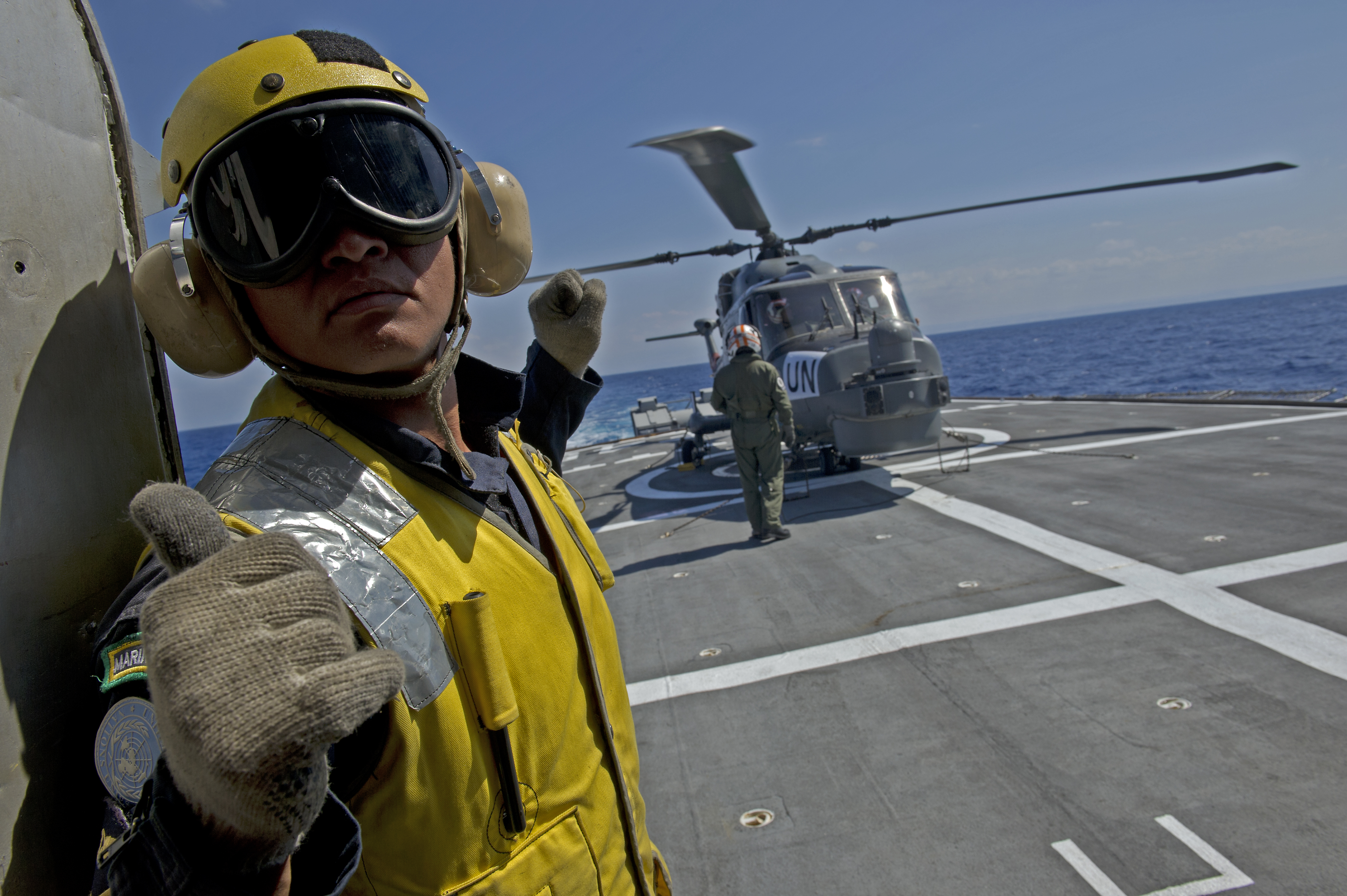
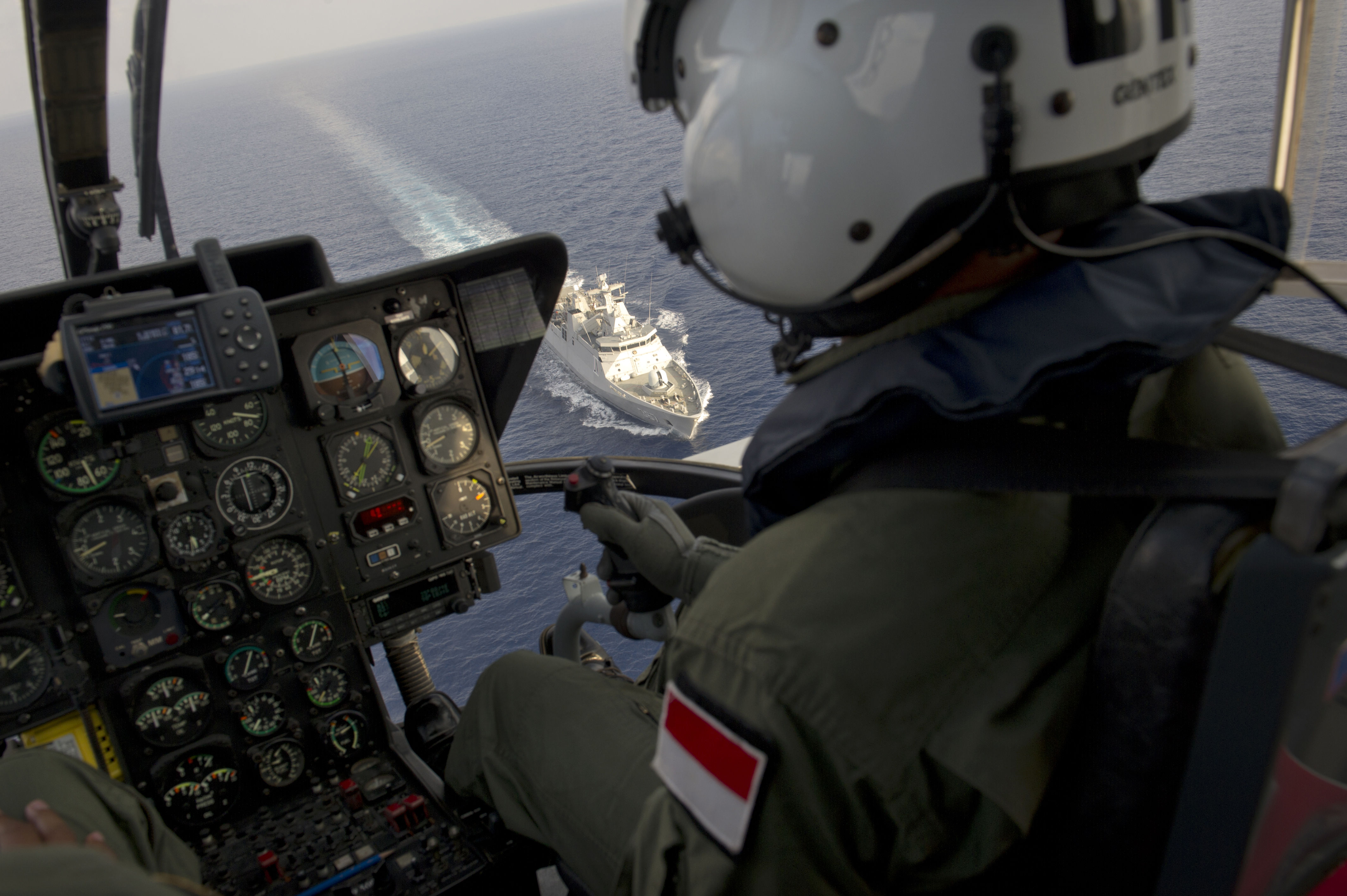

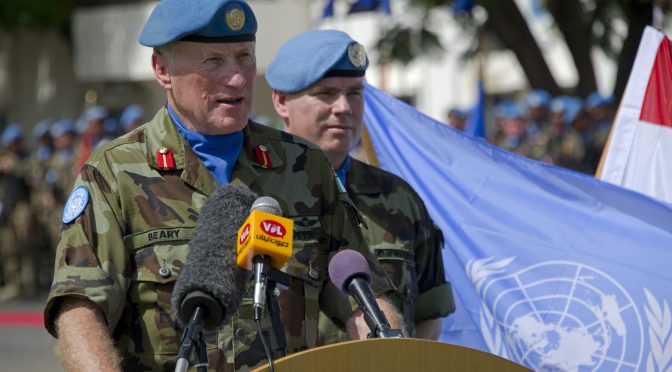


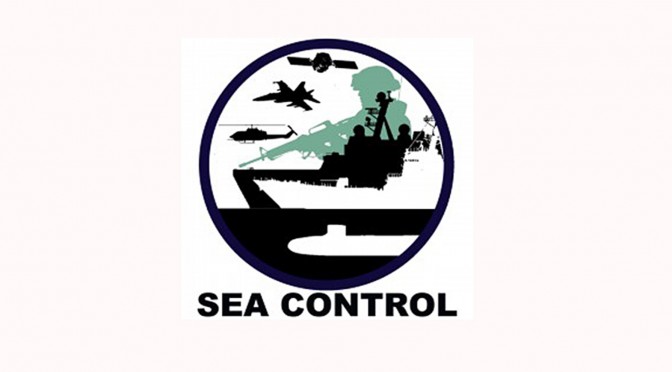
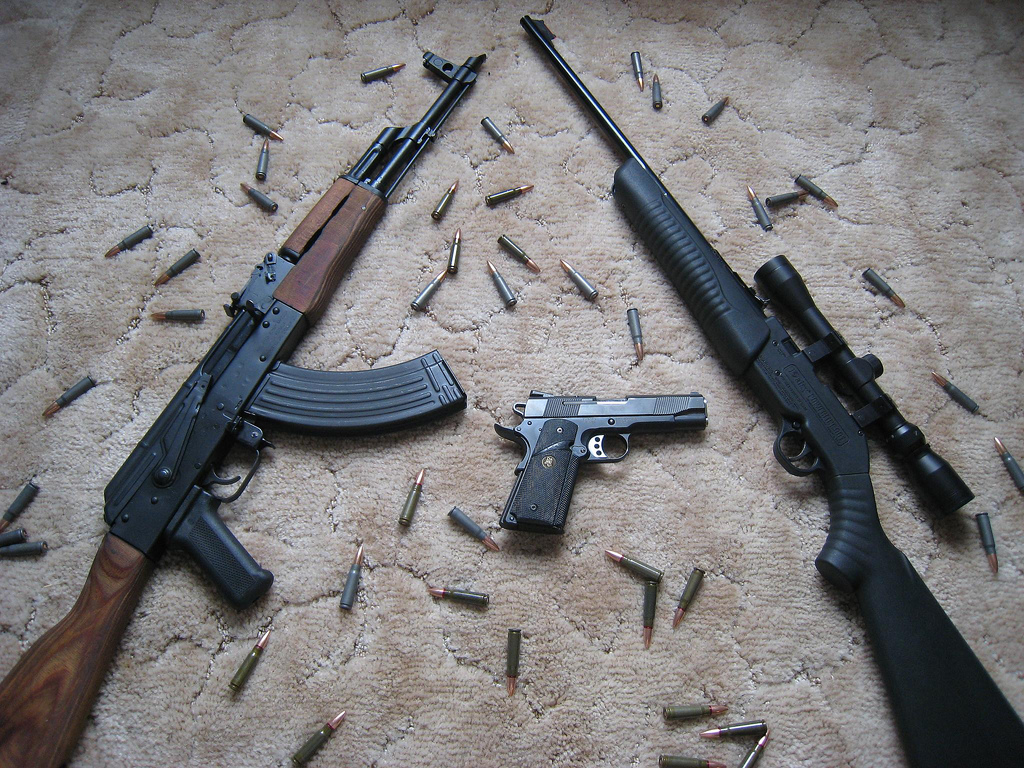 Control Arms. They discuss small arms flows globally before focussing on the impacts of illicit arms flows, as a result of weak maritime security, into the South Pacific Islands—a region of great strategic importance to Australia. Laura explains the Arms Trade Treaty and how UN regimes on arms control are essential for development in Australia’s closest region.
Control Arms. They discuss small arms flows globally before focussing on the impacts of illicit arms flows, as a result of weak maritime security, into the South Pacific Islands—a region of great strategic importance to Australia. Laura explains the Arms Trade Treaty and how UN regimes on arms control are essential for development in Australia’s closest region.